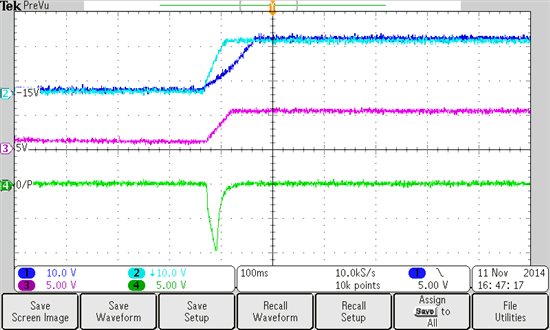Hi
We are using DAC7760 in our Analog Card design
Analog Card is placed on power supply module ( this will provide 5V to DAC ) and separate 24V given to Analog card ( through this +/- 15V is generated fro DAC )
Now, when both Supplies are ON simultaneously, Glitch of -10V of 40ms is observed at DAC Output
What could be the reason?
Thank you,
Saurabh







